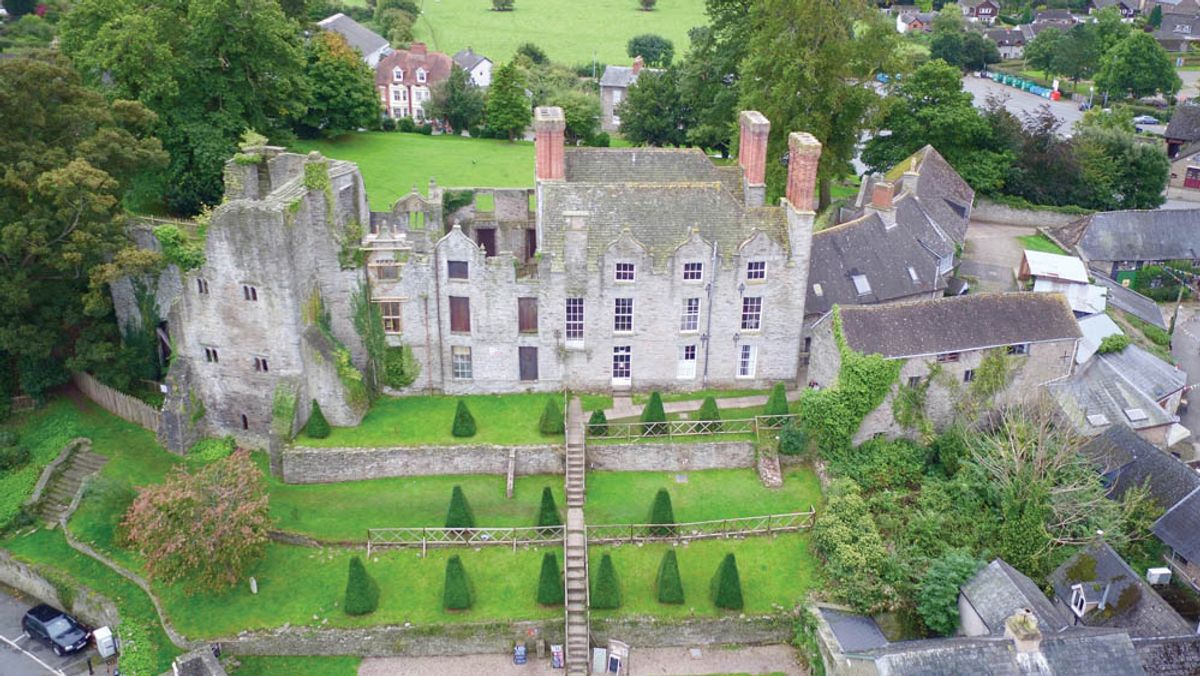In its last days as the stronghold of an eccentric self-proclaimed king, the castle that has towered over the Welsh town of Hay-on-Wye for 800 years deteriorated beyond picturesque ruin into a potential death trap, with ominous cracks and stones dropping from the walls. It is now about to open to the public for the first time, still picturesque but stabilised thanks to a £7m restoration project by the Hay Castle Trust.
The castle was owned for 50 years by the late Richard Booth, who crowned himself “King of Hay”. He transformed Hay-on-Wye into the world’s first "book town", importing second-hand books by the ton and filling buildings, including the old fire station and cinema, with shelves for them. There are still bookshops in every street, making it a place of pilgrimage for book lovers.
Carbon-14 dating found that one of the great gates was from around 1430, making it the earliest working example in Wales
The town stands on the Welsh side of the border with England, and its castle has been in the path of centuries of war. Legend has it that after one of many sieges, it was rebuilt in one night by Maud de St Valery, who carried the stones in her apron.
Built to impress
A grand manor house was added in 1660, but the recent restoration revealed traces of a previously unrecorded Tudor house knocked through into the Norman keep, along with an earlier blocked-up gate, and an enormous fireplace that may date from a lost Norman great hall. Built to awe the town, the manor was discovered to be elevated on a 2m platform to appear even more imposing. Carbon-14 dating of the timber found that one of the great gates was from around 1430, making it the earliest working example in Wales. (The doors of Chepstow Castle to the south are much older but no longer on their hinges.) An even older piece of timber found in the gate’s draw-bar socket appears to predate the castle itself.
The Norman keep was probably a roofless ruin by the late 17th century, and the mansion was gutted by a series of fires. The most recent was in 1977 when a log rolled from the hearth in the room where Booth had set up his throne, issuing passports and granting aristocratic titles; he claimed to have mistaken the crackling flames for the cheering of his subjects. A skylight has now been installed that will open automatically in the dire event of another fire.
When the locally formed Hay Castle Trust bought it in 2011 for £2m, the Grade I listed and scheduled ancient monument was judged by Cadw, the Welsh government’s heritage agency, to be in imminent danger of collapse, with large parts of the building considered to be at risk. Years of fundraising and a £4.5m Heritage Lottery Fund grant in 2016 finally allowed repairs to begin. After much debate, it was agreed the exterior should be restored to its original appearance, but the interior has undergone an unabashedly modern refit. MICA architects have added handsome oak, steel and glass stairs and floors, including a museum-quality temporary exhibition gallery. The redesign has also opened public access to the roof of the keep and its stunning view of the town and the river Wye.
Booth’s kingdom of books inspired the Hay Festival of literature, memorably dubbed “the Woodstock of the mind” by the former US president, Bill Clinton, which fills every available bed in town with visitors from all over the world. To coincide with the festival’s return this year (26 May-5 June), for the first time since 2019, the castle will open later this month with free admission (exhibitions and tours will be ticketed) and become the backdrop for open-air theatre performances of Julius Caesar by the touring company from Shakespeare’s Globe in London.


